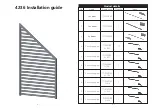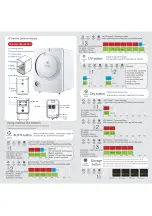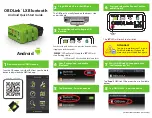
Maintenance
Chapter 4
Zetasizer Nano Essentials
Page 4-3
Note
The electrode holder is made from Natural PEEK (polyetheretherketone)
which is resistant to a wide range of chemical products. However, seek
advice from Malvern and the sample manufacturer before using strong
acid or base.
Cleaning cuvettes
Two main types of cuvette are available:
Disposable polystyrene – do not clean and re-use disposable cuvettes. It gives
inaccurate results.
Reusable glass or quartz – the cleaning procedure depends on the sample meas-
ured so specific instructions cannot be given. Follow these guidelines:
Rinse the cuvette with the dispersant that was used for the measurement.
Try submerging the cuvette in an ultrasonic bath of clean solvent.
Once clean, wipe the cuvette with a lint free tissue (photographers’ lens
cleaning tissues are recommended).
The smaller and more dilute the sample, the more important cleanliness is.
Cleaning the Folded capillary cell
This cell is intended to be used once then discarded, but can easily be used again if
required. We recommend that, before a cell is used for the first time, it is flushed
through with ethanol or methanol to facilitate wetting. A syringe or a wash bottle
can be used. Use only sufficient fluid to wet the surface of the cell and electrodes.
The cell should then be flushed through with water as described below.
To clean the cell:
Fill one syringe with de-ionised water or the dispersant.
Place the full syringe in one of the sample ports on the cell and the empty
syringe in the other.
Flush the contents of the full syringe through the capillary cell into the empty
syringe.
Repeat the flushing process five more times, flushing the liquid backwards and
forwards between the syringes.
Never
attempt to clean the outside of the folded capillary cell. It causes small sur-
face scratches that give inaccurate results.
Man0382-5.0 (Zetasizer Nano Essentials).book Page 3 Wednesday, December 2, 2009 12:06 PM






































